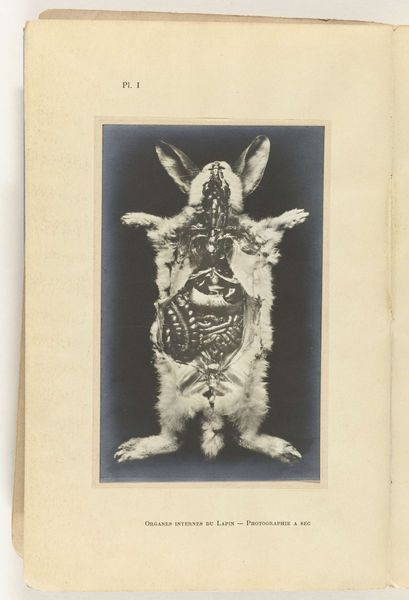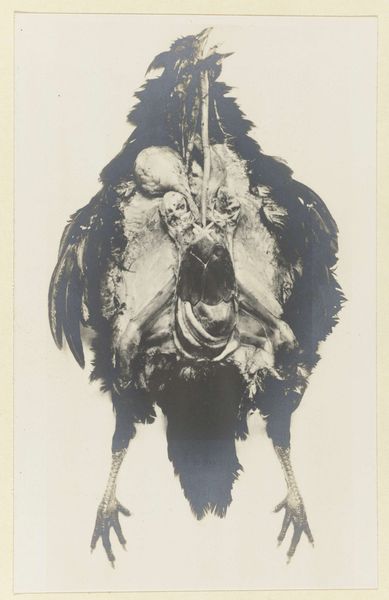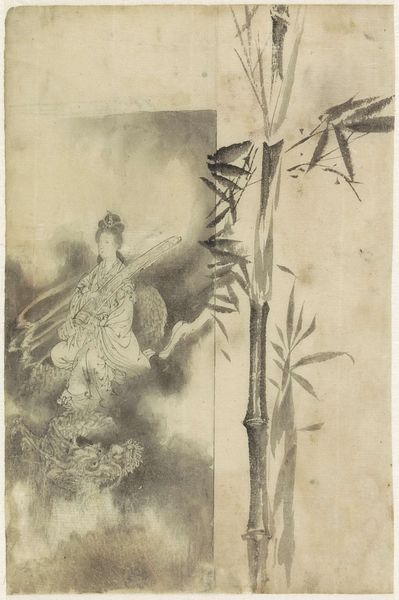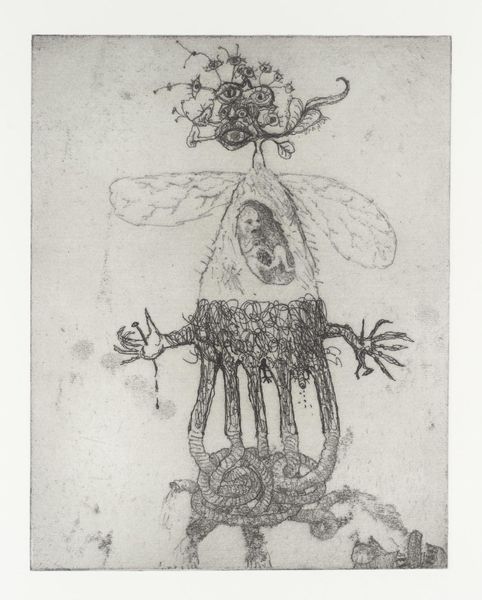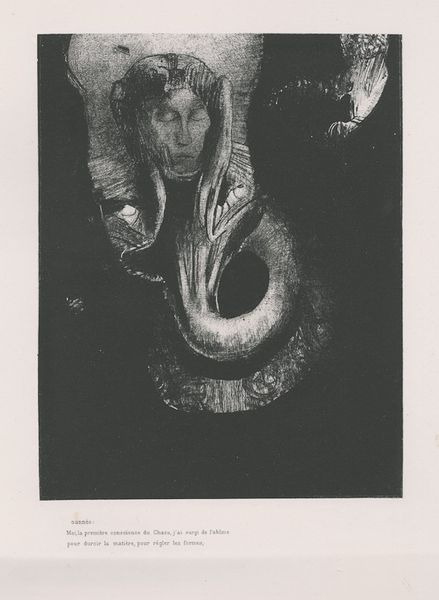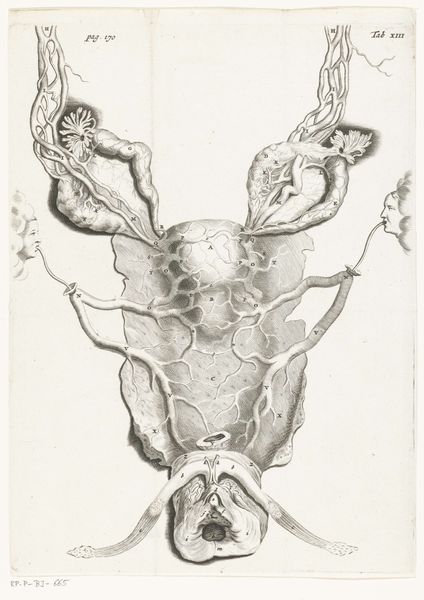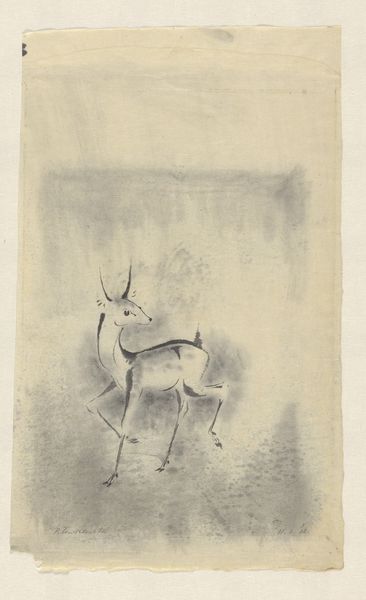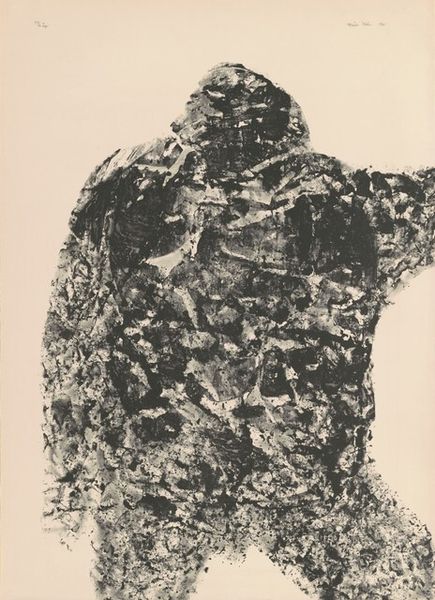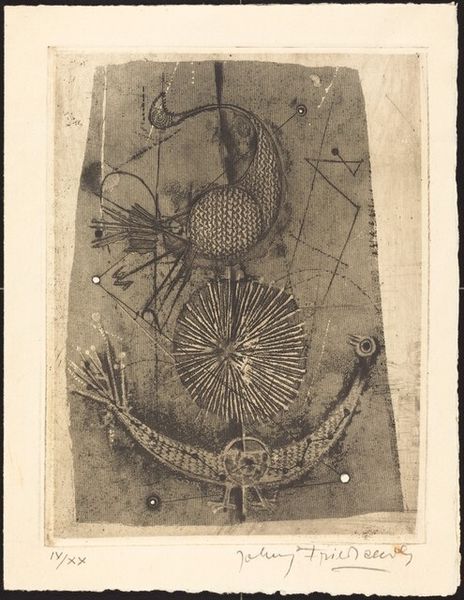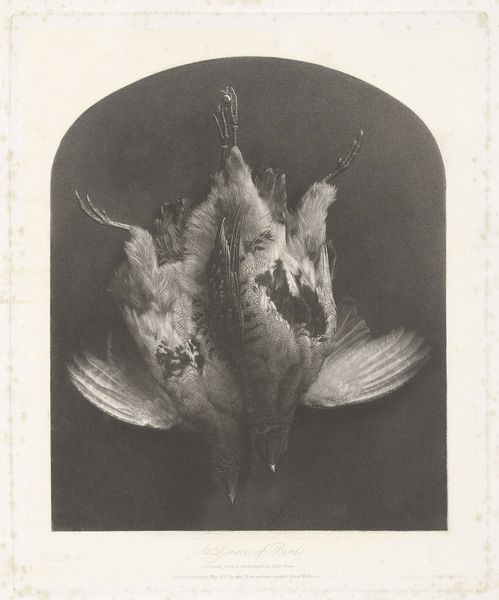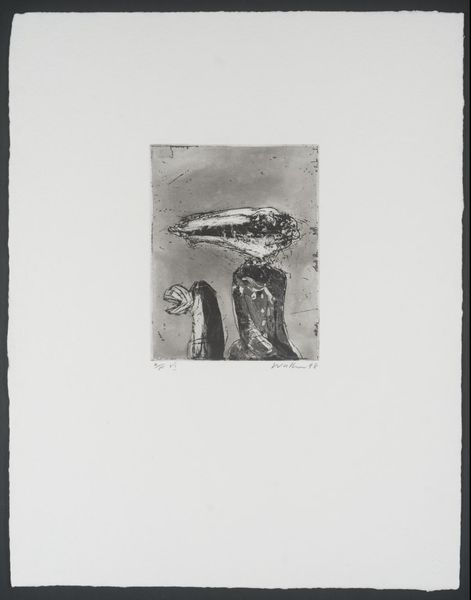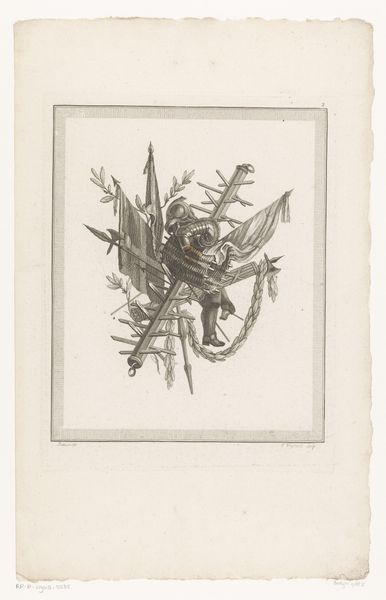
photography
#
photography
#
naturalism
#
realism
Dimensions: height 159 mm, width 100 mm
Copyright: Rijks Museum: Open Domain
Curator: Before us we have "Opengesneden groene hagedis met de organen zichtbaar," a photographic study by Adolphe Louis Donnadieu made before 1901. The title translates to "Openly Cut Green Lizard with Visible Organs," which I find immediately descriptive! Editor: Visually arresting is more like it. There’s a real brutality to the image, even in monochrome. The clinical precision is chilling. What draws me in is the raw exposure of something usually hidden, both visceral and vulnerable. Curator: Given the time period, photography like this served an important function for scientific and medical observation. The sharp detail and seemingly objective presentation helped legitimize the field of comparative anatomy, helping map the intricate materiality of life. It’s all about processes of observation and production. Editor: I find it symbolically loaded, this act of dissection. Lizards, historically, are associated with regeneration and healing—the shedding of the tail as a metaphor for renewal. But here, that potential is violated, presented not as vibrant life, but as inert matter. Does the artist suggest that all the promise inherent to living forms could be reduced to inert components? Curator: I wouldn't read necessarily that far into it. I think Donnadieu was likely trying to produce a resource, a cataloging tool. How this differs from, say, images of animals in classical painting is not that dissimilar if you compare the images and means to the intended ends. Editor: Possibly. But the staging is compelling: pinned open as an entomological specimen rather than allowed natural death and decay, this resonates almost like an autopsy. I think we are confronted with a power dynamic: an imposition of control on a being completely powerless, and for a period not known for ecological ethics. Curator: It speaks, undoubtedly, of labor. Somebody physically undertook the work of dissection and display, using specific tools, and processes. And those tools, materials, and ultimately labor practices reflect values from a bygone, imperialistic era of extraction, and scientific endeavor for profit. Editor: Absolutely. It highlights, in its way, how images and animals become signifiers of deeper ideologies. I will find this particular visual strangely indelible as a reminder. Curator: Indelible yes. The confluence of image, materiality, and context forces that point quite succinctly.
Comments
No comments
Be the first to comment and join the conversation on the ultimate creative platform.
